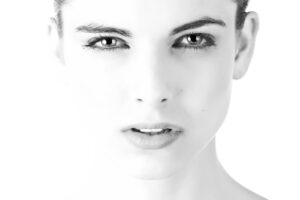How to Achieve Soft Lighting for Portraits
Soft lighting is a game-changer when it comes to Portrait Photography Lighting Techniques. One simple way to achieve this is by positioning your subject near a large, diffused light source. This could be a window on an overcast day, a sheer curtain that filters sunlight, or even a softbox when shooting indoors. The key is to create a gentle, even light that softly wraps around your subject, minimizing harsh shadows and creating a flattering look.
Another trick to achieve soft lighting is by using reflectors to bounce light back onto your subject. This helps fill in shadows and creates a more balanced and soft light across your subject’s face. Experiment with the angle of the reflector to find the perfect balance of light and shadow for your desired effect. Soft lighting can add a touch of elegance and sophistication to your portraits, making them appear more polished and professional.

The Importance of Lighting Angles in Portrait Photography
When it comes to capturing stunning portraits, the angle of your lighting can make all the difference. The way light falls on your subject’s face can accentuate or diminish certain features, helping to create a more flattering and dynamic image.
Choosing the right lighting angle can add depth and dimension to your portraits, creating visual interest and drawing the viewer’s eye to the most important aspects of the image. By experimenting with different angles, you can explore how light interacts with your subject in unique ways, allowing you to craft portraits that are both technically strong and visually captivating.
Using Natural Light to Enhance Portraits
Natural light can work wonders for your portrait photography. When shooting outdoors, pay attention to the time of day and the direction of the sunlight. Early morning and late afternoon usually offer the most flattering light with a warm, golden hue that enhances skin tones beautifully. Position your subject so that the light falls softly on their face, avoiding harsh shadows and squinting eyes.
If you’re shooting indoors near a window, consider using sheer curtains or blinds to filter the light and create a softer, more diffused effect. Experiment with the placement of your subject in relation to the window to find the most flattering angle. Remember, natural light can vary depending on the weather and time of day, so always be prepared to adjust your settings accordingly.
Creating Dramatic Shadows for Portrait Photography
To achieve dramatic shadows in portrait photography, one effective technique is to play with the positioning of your light source. By placing the light at a steep angle to the subject, you can create deep shadows that add dimension and mood to the image. This can help in highlighting certain features or creating a sense of mystery in the portrait.
Another way to enhance dramatic shadows is by incorporating props or elements that can cast interesting shadows onto the subject. This could be through the use of a mesh screen, foliage, or even architectural details that interact with the light source. Experimenting with different objects to create captivating shadow patterns can result in unique and visually striking portraits that stand out.
Utilizing Reflectors and Diffusers for Even Lighting
Reflectors and diffusers are essential tools in portrait photography to help create even lighting and eliminate harsh shadows. Reflectors bounce light back onto the subject, filling in shadows and creating a more flattering look. They come in various colors and sizes to achieve different effects depending on the desired outcome of the portrait.
On the other hand, diffusers soften harsh light by spreading it out, resulting in a more natural and pleasing appearance. They can be used to reduce the intensity of sunlight or artificial light sources, making it easier to capture a well-balanced and evenly lit portrait. Experiment with different positions and angles of reflectors and diffusers to find the most flattering lighting for your subject.
Experimenting with Artificial Lighting for Unique Effects
Are you looking to add a touch of creativity to your portrait photography? Experimenting with artificial lighting can open up a world of unique effects that can take your portraits to the next level. By playing around with different types of artificial light sources such as strobes, LED lights, or colored gels, you can create stunning and eye-catching images that stand out from the rest.
Adjusting the intensity, direction, and placement of artificial lights can give your portraits a distinct mood and atmosphere. Whether you want to create dramatic shadows for a mysterious look or use multiple lights for a high fashion feel, the possibilities are endless when it comes to experimenting with artificial lighting. Don’t be afraid to think outside the box and push the boundaries of traditional lighting techniques to make your portraits truly one-of-a-kind.
Mastering the Use of Light Modifiers in Portraits
Light modifiers are essential tools in portrait photography, allowing photographers to control and shape light to achieve the desired effect. Diffusers soften harsh light, creating a more flattering and natural look on the subject’s face. On the other hand, reflectors bounce light back onto the subject, filling in shadows and adding a beautiful glow to the portrait.
Experimenting with different light modifiers can greatly enhance the mood and atmosphere of your portraits. Whether you’re using a softbox for gentle, even lighting or a grid for more focused and dramatic effects, understanding how each modifier works will help you create stunning and professional-looking portraits. Don’t be afraid to mix and match different modifiers to achieve unique and creative results that truly make your portraits stand out.
Understanding the Impact of Color Temperature on Portraits
Color temperature plays a crucial role in setting the mood and tone of a portrait. It refers to the warmth or coolness of the light in a photograph, with lower temperatures creating a warmer, more orange hue, and higher temperatures producing a cooler, bluer tone. Understanding how color temperature influences the overall feel of your portraits can help you convey the desired emotions and atmosphere in your images.
When shooting portraits, consider the effect that different color temperatures can have on skin tones. Warmer temperatures around 3000-4000 Kelvin can enhance the warmth and softness of skin, while cooler temperatures above 5000 Kelvin can create a more edgy and striking look. Experimenting with various color temperatures can help you achieve the desired aesthetic for your portraits, whether you’re aiming for a cozy and intimate feel or a bold and dynamic vibe.
- Lower color temperatures (around 3000-4000 Kelvin) create a warmer, more orange hue
- Higher color temperatures (above 5000 Kelvin) produce a cooler, bluer tone
- Different color temperatures can impact skin tones in portraits
- Warmer temperatures enhance warmth and softness of skin
- Cooler temperatures create a more edgy and striking look
- Experimenting with color temperatures helps achieve desired aesthetic for portraits
Tips for Controlling Contrast in Portrait Photography
When it comes to controlling contrast in portrait photography, one key tip is to pay attention to the light source. By positioning the light at different angles or distances from your subject, you can adjust the level of contrast in your photos. Experiment with moving the light source around and see how it affects the shadows and highlights in your portraits.
In addition to adjusting the light source, another helpful tip is to use a reflector to bounce light back onto your subject. This can help fill in shadows and reduce the harshness of the contrast in your photos. Reflectors come in various sizes and colors, so you can choose one that best suits the look you’re going for in your portraits.
Common Mistakes to Avoid When Lighting Portraits
One common mistake to steer clear of when lighting portraits is using harsh, direct light. This can create unflattering shadows and make your subject appear overly contrasted. Instead, opt for softer, diffused lighting sources to achieve a more flattering and even look in your portraits.
Another mistake to avoid is forgetting to consider the color temperature of your light sources. Mixing different color temperatures can result in a messy and unprofessional-looking portrait. Make sure to use lighting sources that have consistent color temperatures or adjust your white balance settings accordingly to maintain a cohesive and natural appearance in your portraits.
What are some common mistakes to avoid when lighting portraits?
Some common mistakes to avoid when lighting portraits include harsh lighting, improper lighting angles, not utilizing natural light effectively, creating overly dramatic shadows, not using reflectors or diffusers for even lighting, not experimenting with artificial lighting, neglecting the use of light modifiers, not considering color temperature, and not controlling contrast effectively.
How can I achieve soft lighting for portraits?
To achieve soft lighting for portraits, you can use a diffuser or softbox to create a gentle, flattering light on your subject. Avoid using harsh direct light sources that can create harsh shadows and unflattering results.
Why are lighting angles important in portrait photography?
Lighting angles are important in portrait photography because they can dramatically affect the look and feel of the portrait. By adjusting the angle of the light source, you can create different moods, highlight certain features, and minimize imperfections on your subject’s face.
How can I use natural light to enhance my portraits?
You can use natural light to enhance your portraits by positioning your subject near a window or in open shade. Natural light can create a soft, flattering glow on your subject and can be a great option for achieving a natural and authentic look in your portraits.
What are some tips for controlling contrast in portrait photography?
To control contrast in portrait photography, you can use reflectors to bounce light onto your subject, use diffusers to soften harsh shadows, adjust your camera settings to balance exposure, or use post-processing techniques to fine-tune contrast levels. Experimenting with different lighting setups and techniques can help you achieve the desired level of contrast in your portraits.
follow Portrait Photography Lighting Techniques on Pinterest.

